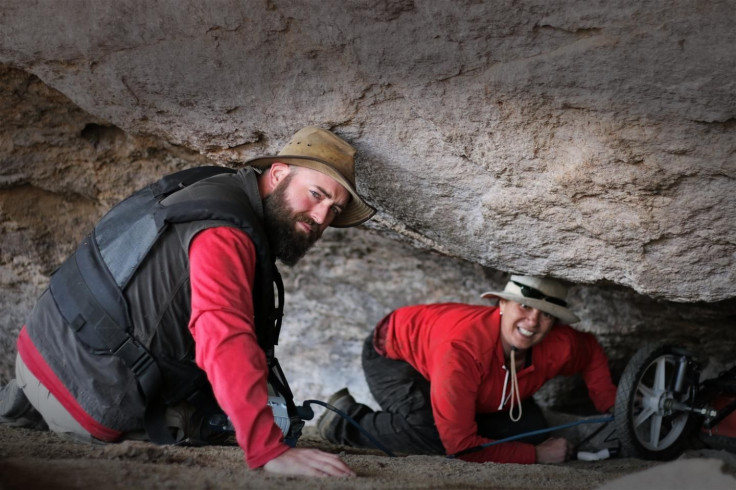Ancient Human Settlement Found High Up In The Peruvian Andes; Highest Point Of Ice Age Human Habitation

Humans apparently took to the mountains of Peru 900 years earlier than previously documented, U.S., Canadian and German researchers reported. An archeological team found signs of human ice age habitation in the southern Andes at the 4,500 meter-level (2.8 miles) above sea level.
The scientists said, in a paper published in the journal Science, hunter-gatherers colonized the treeless landscape more than 12,000 years ago during the terminal Pleistocene period, within 2,000 years after first arriving in South America, despite the cold, high solar radiation and low-oxygen conditions.
"We don't know if people were living there year round, but we strongly suspect they were not just going there to hunt for a few days, then leaving," archeologist Sonia Zarrillo of the University of Calgary said in a press release. "There were possibly even families living at these sites, because we've found evidence of a whole range of activities."
Zarrilo said there were indications people were living near the Cuncaicha site in the Pucuncho Basin because researchers found "remains representing whole animals." If they were living a distance way, she said, the animals would have been butchered in the field and the carcasses left behind.
Zarrillo said researchers want to know whether Andeans genetically adapted when they arrived in the area or whether the genetic differences, including higher metabolic rate, greater lung capacity and higher hemoglobin concentrations developed over the millennia.
"Study of human adaptation to extreme environments is important in understanding our cultural and genetic capacity for survival," the research team, led by Kurt Rademaker, a University of Maine visiting assistant professor in anthropology, wrote.
"The Pucuncho Basin sites suggest that Pleistocene humans lived successfully at extreme high altitude. ... As new studies identify potential genetic signatures of high-altitude adaptation in modern Andean populations, ... research will be needed to understand when and how these adaptations evolved."
A press release from the University of Maine said the team found tools made from obsidian, andesite and jasper at a rockshelter with alcoves and views of wetland and grassland habitats. The rockshelter also had sooted ceilings and rock art, and there also were plant remains and bones from vicuna, guanaco madelids and taruca deer.
"Research really hasn't been done here up until now, because it's so remote," Zarrillo said. "Our team hiked up to three or four hours to get to these sites. That was a climb, carrying all of our gear, camp equipment and food. And it freezes every night. Sometimes it snows. These are incredibly hard sites to access."
© Copyright IBTimes 2024. All rights reserved.






















